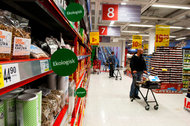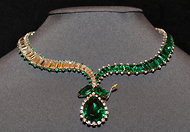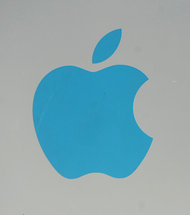A woman answering the phone in the executive offices of the group headquarters of Wuxi Guolian, the holding company, said that a deal had already been reached for the acquisition of Suntech, which is traded on the New York Stock Exchange. The woman declined to identify herself.
Rory Macpherson, Suntech’s director of investor relations, declined to address a question about Wuxi Guolian, saying by e-mail only, “It’s our policy not to comment on market rumors.”
Suntech has been driven to the financial brink by an obligation to pay more than $541 million to holders of convertible bonds at the end of this week. It stopped releasing financial reports last year after disclosing in July that it had invested in 530 million euros, or $690 million, worth of German bonds that might prove fraudulent. The company’s cash reserves have been dwindling, analysts have said, and Chinese state-owned banks have been reluctant in recent months to lend more.
Suntech said it reached a deal with three-fifths of the bondholders early this week to give it a two-month reprieve to find an answer to its financial troubles. But some bondholders have questioned the announcement, saying that they were not even approached about a reprieve. Suntech’s convertible bonds have been trading this week for as little as 30 cents on the dollar. Its shares closed at $1.09 on Tuesday, down 5.2 percent for the day and down 63.2 percent in the last 12 months.
It was unclear late Wednesday in Asia what terms might be offered to Suntech’s bondholders or long-suffering shareholders. The shareholders might have to pass judgment on a merger, particularly if a merger were to take place without an initial bankruptcy filing to erase debt.
Suntech announced Tuesday that it was closing its factory in Goodyear, Ariz., at the cost of 43 jobs there. The factory put aluminum frames and electrical junction boxes on solar cells imported from China so that the fully assembled solar panels would qualify for “Buy American” incentives.
The collapse of Suntech is a milestone in the precipitous decline of China’s green energy industry in the last four years. More than any other country, China had bet heavily on renewable energy as the answer to its related problems of severe air pollution and heavy dependence on energy imports from politically unstable countries in the Middle East and Africa.
China is also exposed to global warming on its low-lying, densely populated coastline, which the Energy Department in Washington has estimated to have more people vulnerable to displacement from rising sea levels than anywhere else on earth.
But China’s approach to renewable energy has proved ruinous, financially and in terms of trade relations with the United States and the European Union.
State-owned banks have provided $18 billion in loans on easy terms to Chinese solar panel manufacturers, financing an increase of more than tenfold in production capacity from 2008 to 2012. This set off a 75 percent drop in panel prices during that period, which resulted in losses to Chinese companies of as much as $1 for every $3 in sales last year.
The huge loans and extremely low prices prompted SolarWorld, a German company, and its American subsidiary to file antidumping and antisubsidy cases in the United States and the European Union against solar panel exports from China. The United States has responded with tariffs of about 40 percent on solar cells and solar panels from China, and the European Union is concluding its deliberations and is expected to deliver an initial verdict this summer.
Yotam Ariel, the managing director of Bennu Solar, a consulting firm in Shanghai, said that the closing of the Arizona factory was “yet another indication of a tough struggle.”
This article has been revised to reflect the following correction:
Correction: March 13, 2013
An earlier version of this article referred incorrectly to a transfer of Zhu Kejiang, Wuxi’s longtime mayor. He was sent this winter to be municipal party secretary in another city, not another province.
Article source: http://www.nytimes.com/2013/03/14/business/energy-environment/suntech-power-on-financial-brink.html?partner=rss&emc=rss


